Media | Articles
No, Michigan’s Plymouth Fury Police Cars Aren’t Extinct
It was the late ‘70s, and I was driving from Detroit to Chicago in my time-worn but entertaining ’58 Mercedes 220S. I had just finished a photoshoot for Chrysler’s celebration of the Hemi engine. Hoping to get home in time to drop my film off at the lab, I was pushing the car a bit. Well, maybe more than a bit. I think that on a downhill section of I-94 I had urged the old Benz to a speed in excess of 80 mph—about 25 over the cursed national speed limit of the era. I was feeling good, high on the success of the day, knowing I had some good shots for my pal, the late editor of Hi-Performance CARS, Steve Collison.
Suddenly, there it was, filling my rearview mirror with a roar: A big, blue Michigan State Police cruiser with red roof light rotating and headlights flashing. Breaking into a sweat, I pulled to the side, rolled down the window, and prepared for the worst. Fortunately, the seemingly dire situation didn’t turn out as bad as it might have. I got off with a ticket for 65 in a 55 and a stern warning that next time it would be much, much worse.

I don’t really have a soft spot for police cars, but Ross Urtel and his partner Eric Laesch do. They’re the owners of a company called Chase Classic Motors, and they specialize in the restoration of public-service emergency vehicles and other unusual collectible cars. I met Urtel at a car show, when he arrived behind the wheel of the car of my nightmares: a 1977 Plymouth Fury police car, a dead ringer for the one that had given me heart palpitations almost half a century ago, commonly known as a “Michigan Fury.”




Urtel’s Plymouth pursuit vehicle is powered by the E86 440-cubic-inch V-8, a special option for police vehicles. Unlike the 440 found in most ’77 Mopars, that powerplant is equipped with a high-performance cam and dual exhausts, so it churns out 245 horsepower and 355 lb-ft of torque. Those may not seem like big numbers today, but in the days when engines were strangled by emissions control, they were. According to Urtel, the Michigan Fury was faster and quicker than any domestic car sold in the U.S. at the time. His was driven by a Michigan State Trooper named Victor Windstorm, who used it to patrol state roads looking for miscreants like me. Urtel thinks that the car pictured here is the sole survivor of a small fleet of pursuit vehicles that Michigan owned at the time. And while the venerable cop car is pushing 50 years old, it’s still moderately quick. It’s even pretty, in a twisted kind of way.

Like many other collectors of emergency vehicles, Urtel and Laesch once thought that the Michigan pursuit vehicles of the ‘70s were an extinct species. They assumed that all of the cars had been either seriously molested or junked. Then, just a few years ago Urtel learned that a reasonably complete Michigan Fury might still exist. Holden Cooper, a firefighter in Mackinaw City, Michigan, posted on a social media site that he had seen just such a car in a barn in that town way Up North. He said the owner lived out of state. The car had probably been in storage for about 20 years, he guessed.
Marketplace
Buy and sell classics with confidence
At some point, the car went up for sale on Facebook Marketplace. Urtel tried to get up to Mackinaw City to see it. He planned to lay some money down and drive the car home to his business in Clinton Township, Michigan. He was too late. The car went to Dan Passucci, a Massachusetts fleet supervisor who shares Urtel’s interest in police cars. Passucci did some refurbishment work, adding to what had been done by another owner in the ‘90s. Eventually, he decided to sell the car and reached out to Classic Motors, Urtel’s business. This time, Urtel didn’t hesitate. Soon, the Michigan Fury was back in its home state.
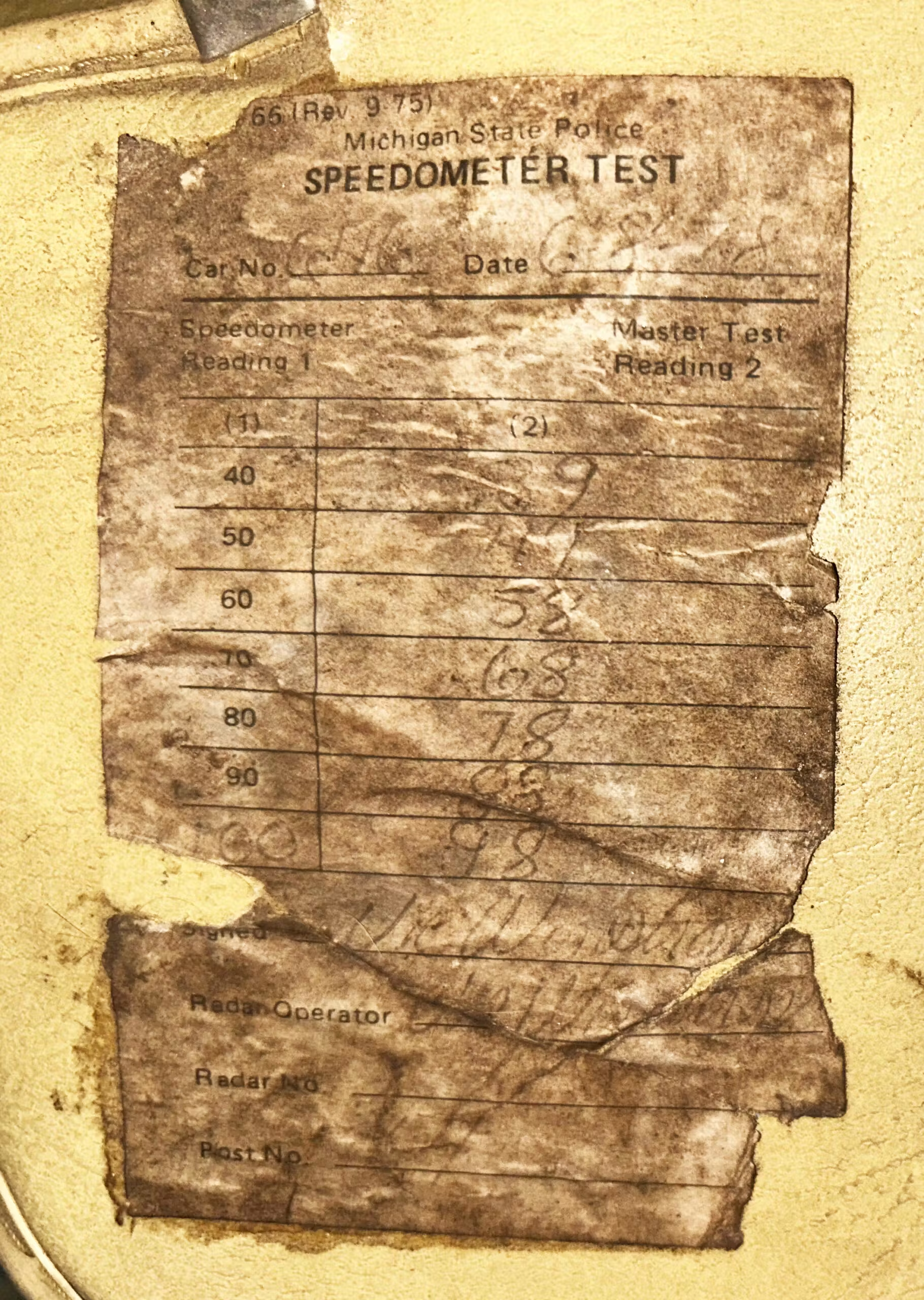
Attached to the car was a speedometer calibration form that dated back to the car’s days in service. The form was signed by a retired state trooper named Victor Windstorm. A post on a web page for retired troopers located the officer, who recalled the car but has thus far not returned queries from Urtel and Laesch. They remain hopeful.



Meanwhile, the restoration of the big, blue Michigan Fury continues. Urtel and Laesch are looking for a front bench seat from a police car to replace the cushy one that was installed in the ‘90s by the owner of a cab company. (The seat he put in is a lot more luxurious than the standard-issue bench typical of police cars and other fleet vehicles.) That owner used the Fury as his personal car and as an ersatz tow truck that could retrieve broken cabs and drag them back to his barn. Urtel and Laesch also want to upgrade the cooling system, rear suspension, and a few other things on the car. But for now, the Michigan Fury looks good and runs well, so it’s making the rounds at shows for public service vehicles, proving that old cop cars can still strike fear into the hearts of ne’er-do-wells.
***
Check out the Hagerty Media homepage so you don’t miss a single story, or better yet, bookmark it. To get our best stories delivered right to your inbox, subscribe to our newsletters.

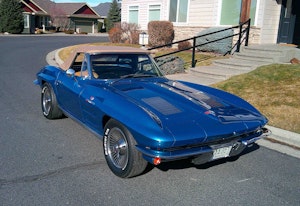
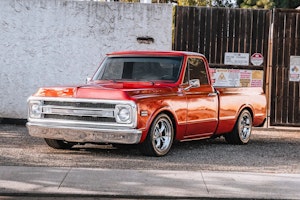


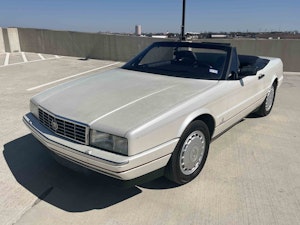


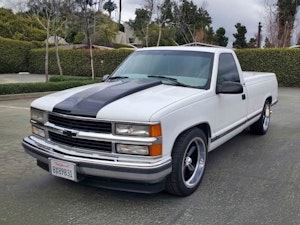













I quit driving long-haul in early ’77, so guess I lucked out in not seeing one of these behind me. It’s a cool restoration project!
Michigan State troopers are trouble when one is speeding etc. Troopers start out in prisons and when they finally get to patrol they never want to go back to the penal system. And that goes for right now as well slow down.
Many of these got destroyed in “Smokey and the Bandit”.
The article mentions that the car had the original seats replaced. the standard police car of the era was a pretty stripped-down basic car. However, the North Carolina State Highway Patrol was one of the first agencies to consider life-cycle costs of their vehicles instead of just a low initial purchase price. In the early seventies they began ordering cars that had the basic police content but upgraded to such ‘luxuries” as split power bench seats with upgraded upholstery, climate controlled HVAC, AM/Fm stereo, cruise control. They took them out of service at around 70-75,000 miles of essential one driver service that had had meticulous maintenance. These cars were, and their current successors are, much sought after when they are retired from service, and brought premium prices compared to most other surplus police cars of the era.
Interesting. Seems as though the NC Highway Patrol was very forward-thinking for the times!
They always have been.
I can remember, in the early 80’s, my auto shop teacher, Lloyd Purcell, a great man, telling all of us young kids that buying an old police or sheriff’s vehicle was a pretty good deal a lot of the time. He said that by law the cars have to go 100,000 miles before they get retired but a lot of the motors don’t make it so a new short block is typically installed around 75,000. You buy a cop car and get a motor with only 25,000 on it!!!!!
My father-in-law was a retired police officer. He was the most brutal person to anything with an internal combustion engine powering it. Engine and transmissions were replaced in his vehicles almost like regular maintenance. Since then I’ve always been weary of purchasing any type of municipal vehicles or equipment. He kept me busy when he was alive!
you are correct. i started my le career in the early 70s and we drove plymouths at the agency i worked for. some police cars may show low miles, but we almost never shut off the engines and drove them over curbs, and beat the daylights out of them. i would avoid buying any police car unless i was a collector and planned to restore them.
I joined the Michigan State Police, March of 1964 and after Recruit School was assigned to the Brighton Post.
In my experience the 1963 and 64 Plymouths were the fastest.
When we started getting the Fury the speed and quickness took a drastic cut.
As I recall the engine was a 383 but that may not be correct. I do well remember that performance went down in the Fury.
I JUST READ YOUR POST.I LIVE IN THE BRIGHTON/HOWELL AREA AND THEY JUST TORE DOWN THE POST AT GRAND RIVER/OLD 23 ABOUT A WEEK AGO.I DONT KNOW WHATS BEING BUILT THERE BUT IT S LONG GONE.YOUR POST BROUGHT BACK MEMORIES BUT OF A DIFFERENT POLICE CAR.MY 1ST CAR WAS BOUGHT AT AUCTION.MY BOSS AT THAT TIME GOT IT FOR ME AS I WASNT 21 YET AND THAT WAS THE ADULT AGE FOR CONTRACTS..HE GOT A 62 4 DOOR PLYMOUTH SAVOY THAT NEEDED A VALVE GRIND AND WHEN WE PULLED THE HEADS OFF IT TURNED OUT TO BE A 413 CU INCH 365 H.P. V-8.IT WAS A RETIRED FBI CAR.NO LIGHTS OR HOLES DRILLED IN THE BODY FOR ACCESSORIES AND NOT A STICK OF CHROME ON IT..3200 LBS.AND ALL TORQUE ESPECIALLY ON THE HIGHWAY..I FOOLED MANY FORDS AND CHEVYS AT THE STOPLIGHT.FOR SURE..THIS WAS MY 1ST CAR AND I WISH I STILL HAD IT…..THANKS FOR THE GOOD MEMORIES…..
Cool story!
My experience with these goes back to the early sixties. Bunches of retired blue patrol cars roamed the streets of Lansing and environs after they were sold to ordinary citizens. My recollection was the brackets on the hood were still on some of the cars. Easier than patching the holes. A batch of Chevy Impalas, white over Marina blue, could be seen over the border in Indiana. I hitched a ride on the Indiana toll road with some Detroit cops in a Ford Interceptor. Hardly any room for me in the back next to the beer cooler. We were Intercepted at 140 MPH by one of the Indiana cops and advised to slow down. Fastest ride to Chicago in my life. Those days, I-94 was not complered to the toll road. A pit stop in the creepiest gas station in the US was on the itinerary near Michigan City, as I recall. College days not entirely for book learnin’.
my first car was a ’77 Plymouth Fury cop car from Michigan I bought it from an acquaintance of mine who had driven it down to Florida. I paid $400 for it in 1981 and I figure how could I go wrong as it was only 4 years old, but I was wrong, the starter went out a few days after I got it and everything underneath the car was rusty and well beyond my 17 year old kid skills and pathetic tool kit to replace it. I sold it to my dad’s friend who owned a BHPH lot who figured “how could he go wrong?” buying a 4 year old car for $300. I saw it in the junkyard a few months later. At least it was only a 400 engine, not the 440
I loved those old cars. I went to work for the Arkansas State Police in early 1976, and my first issued “unit” was a 1976 Dodge Royal Monaco. Hide-away headlights and all. 440 engine. Three speed torqueflite. I think 3.23 or 3.21 gears, but don’t remember which. The old square, “twin-sonic” full-width bar lights had so much drag, that it would only top out at about 112-115 mph. At the time, I read somewhere that you could figure that a car carrying those would run about 85% or so of its actual top speed. That actually was pretty close, because the slick top cars were much faster. Our cars did have a/c and a few more amenities, much like North Carolina as referenced in the above comments. In 1978, I was issued a 1978 Dodge Monaco, almost identical to the Michigan car above. It was a 440, again with a/c, power locks, steering, brakes, etc., and a great car. By then we had strobe lights, and they were much more streamlined. That car would pull the lights to about 120 or so, and run close to 140 without them. It also had a three speed torqueflite, with a 2.7x rear. My monthly reports for both cars reflected an overall fuel mileage of about 6-8 mpg. When I retired after 36 years plus, I was driving a Dodge Charger hemi, and it had a limiter on it that restricted it to 150. It would run 149 on the GPS, uphill, downhill, into the wind, away from the wind…didn’t matter. 149 it was. On the day I retired in 2012, I drove it to Little Rock and it turned over 150,000 miles on the way. I had done nothing to it except keep it serviced, and had replaced nothing on it other than tires and brakes. In fairness, by then I was spending my time in headquarters, so that car wasn’t abused. Much. It was an ’06, with 345 hp, but I figured that the guys on the road needed new cars worse than the old man did, so I kept it long past its normal turn-in time. By then, (and now) the Chargers were rated at way more hp, but they’re still limited to 150 mph. I can tell you one thing for sure; every trooper who has one sure does hate to see the end of the Chargers. Thanks a lot, Stellantis!!!
It looks in good condition.
The front view of the 77 Fury still gives me PTSD from seeing it in my mirror back in the day. But, I am getting past it and now own a 2011 Ford Crown Vic Police Interceptor with all the trimmings.
Back in 1965 the Traverse City State Police station used Plymouth Furys with the 383 and Ford Galaxies with the 390. Our neighbor was a trooper, and he said the Furys were much faster than the Fords, but the Fords were much better in the snow/ice.
Great article! It gave me a lead on a possible site to restore my 1971 Catalina Freeway Enforcer. And it is only about 2 hours from my home. Hopefully they will be interested!.
I know for a fact a 77 Trans Am can outrun one of these.
Road and Track tested a 77 TransAm and with a 3.77 rear end. Top speed was rev limited at 110mph. The Mopar Police Package ran 2.71 axels. I believe MSP tested it to something a bit north of 130.
My first car was a nearly identical 77 ‘Fury’ (the title listed it as a ‘Plymouth Police’) bought at the MI state surplus auction for $650 in August 1980. Mine was a conservation officer’s pursuit car so it was forest green and had minor spring lifts on the rear leafs, the 440HP as well as rubber floormats and a bench seat. The MSP cars actually had high-back split bench seats for all-day-in-the-seat comfort as well as carpet (all in blue) and other amenities for the patrolmen. All the 440 equipped cars sold cheaply as there was an OPEC action on and gas prices were high.
Mine was a bit scraped and dinged from a pursuit or 2 but had only 65k miles…the blue MSP cars were retired with 90K. I spent many hours sanding and prepping and took the car to the local Earl Scheib which had a very talented sprayer. My nice prep work paid off and the car looked great enough that the shop owner asked if I wanted a job. I drove that car thru college and got lots of looks from people who thought it was an undercover police unit. One time my buddies and I were going camping and stopped at a store to get beer. As we loaded the trunk a passerby yelled “Moonshine County Express”
As for performance, it was pretty good though at 4000lbs it was heavy and geared for freeway patrol so not quick off the line. But on the road it was great joy to floor it…the Torqueflight would downshift to 2nd and pull hard to 80MPH then shift hard into 3rd and pull hard again (Car & Driver called it “really prodigious acceleration” when they tested one). CD got a top speed of 126MPH, the fastest I ever got mine was 116 on the certified speedo @4200rpm, but it would get a bit floaty and it was my only wheels so prudence held sway. It would go 110 all day…until you ran out of gas, of course
Thanks for the writeup it brought back good memories.